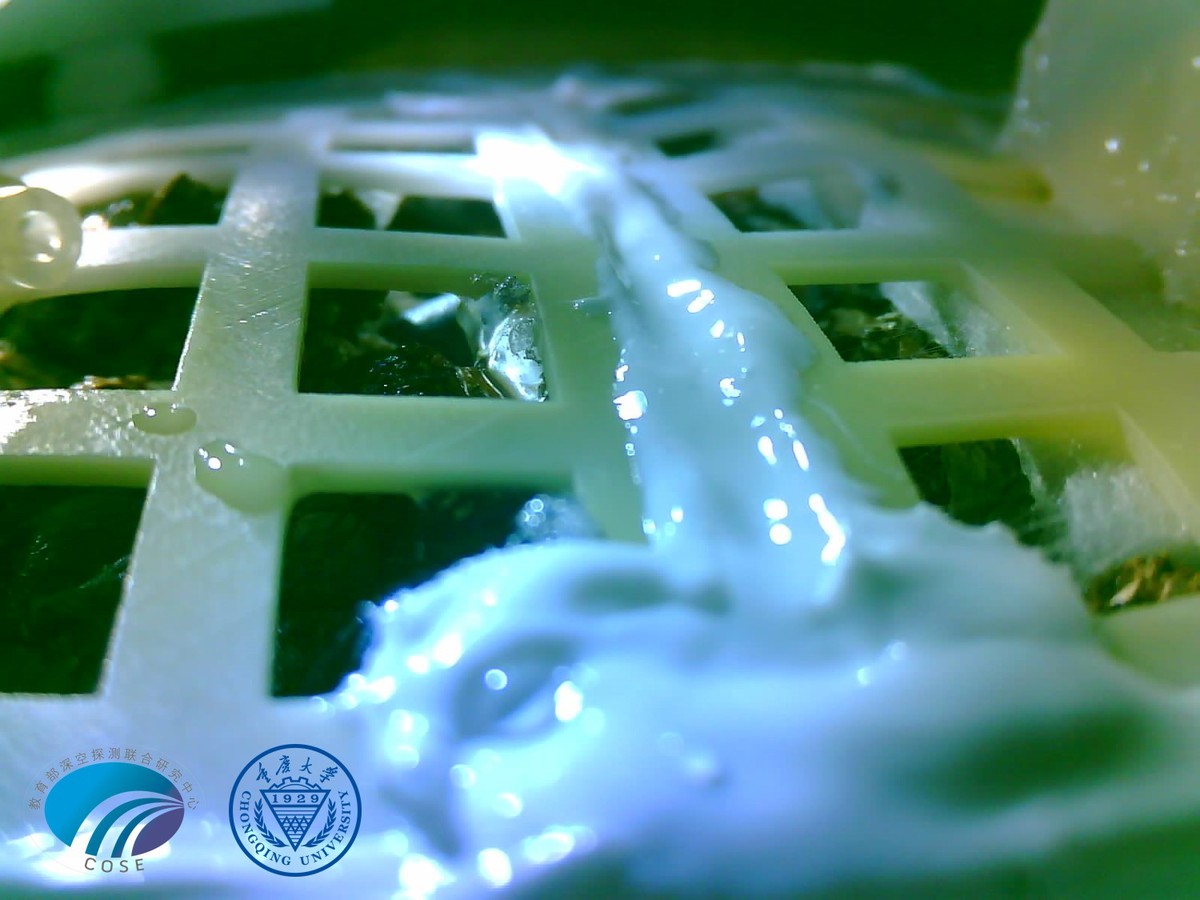Plants sprout on moon's far side


Despite huge temperature changes, strong radiation and a vacuum on the moon, tender green shoots of cotton have sprouted in a sealed can there, marking China's successful development of the first plant growth on the lunar surface.
Scientists have conducted many biological tests aboard space stations and other spacecraft, but never on the surface of the moon.
At 8 pm on Saturday, the biological experiment sent back a photo showing that the cotton shoots had emerged and the plants were growing well inside the sealed test can, according to Chongqing University, which leads the biological science project for the Chang'e 4 mission.
"It is the first time humans have conducted a biological growth and cultivation experiment on the surface of the moon," Liu Hanlong, director of the project and deputy head of Chongqing University, said at a news conference on Tuesday.
"It will provide valuable basic information and experience for building a moon base in the future."
Chang'e 4 was launched atop a Long March 3B rocket in early December. It is the country's fourth lunar mission and the world's first expedition to successfully land on the moon's far side, most of which never faces Earth.
Six living things were placed inside the sealed cans-cotton, rapeseed, potato, thale cress, yeast and fruit flies-forming a simple micro ecosystem. The load weighs about 2.6 kilograms, including soil, two cameras, 18 milliliters of water, control pads and the case, which is made of a special aluminum alloy. There is about a liter's worth of growth space.
"We can confirm that the cotton has sprouted," said Xie Gengxin, chief engineer of the biological project. "We are not sure about the other living things as the cameras didn't record their activity."
He said the most difficult part is to create the right environment for plants' growth on the moon in terms of water, light and temperature.
The experiment's case is equipped with a temperature adjustment system, light conduit pipe and water storage block.
"We have a special design to let the water out at the right time," he said. "In order to get some sunlight, we even cut a small hole on the top of the can and resealed it with a piece of glass."
The test on the moon started on Jan 3 and finished on Saturday, lasting about 213 hours and involving the transmission of over 170 pictures.
With the far side's lunar night having started, the six living things are frozen at -52 C. They will decompose into organic matter as the temperature rises during the next lunar day and remain inside the can forever.
The team also conducted comparative experiments on Earth.
The China National Space Administration announced on Friday that the Chang'e 4 mission was "a complete success" as all scientific equipment mounted on the lander and rover had functioned well and their data had been received by ground control.
- China's police chief meets US secretary of state
- New advanced AI development base launches in China
- Record-breaking inbound travelers arrive in Shanghai onboard single ship
- Asia's first FPSO built in China
- Ziyang Fuxi Tea makes international debut in Kazakhstan
- Haileybury Tianjin thrives with Beijing-Tianjin-Hebei development strategies




































